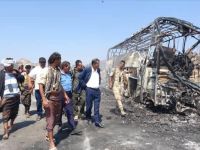March 2007
At the beginning of March, the mood of the Tehran Stock Exchange (TSE) was heavily influenced by the announcement of the Initial Public Offering (IPO) of Mobarakaeh Steel Complex (MSC). This was to become the TSE’s largest IPO in its 40 year-long history. On 11 March, 3% of the shares of MSC were offered to the market raising approximately $98 million. The size of the IPO was considered large compared to the TSE’s average daily trade volumes of around $10 million whilst the Iranian year was ending which historically results in large sell offs by the institutional investors. Following the IPO therefore, the exchange went through a few days of weak performance both in terms of volume and price. The share price of the MSC slid by two percent from its initial price after only a week.
The fate of another IPO, which occurred before March, was rather more positive. The demand for the shares of the National Iranian Copper Industries Company (NICIC) grew significantly in recent weeks following the rise in international copper prices from the previous $5,800 per ton to around $7,000 per ton. NICIC, the second largest listed company on the TSE, currently owns and operates copper reserves, considered to be some of Asia’s largest. NICIC’s reported forecasted earnings for the current Iranian year (ending March 2008) are based on global copper prices of $5,200 per ton. Continued strength in world copper prices would indicate a significant upward revision to NICIC’s forecasted earnings.
Other previously attractive sectors on the market such as iron ore mining, petrochemicals and zinc production experienced weakness in March, evidenced by share supply queues. The overall trade volume of these sectors fell by 31% and 53% compared to February and January respectively. One of the only sectors which remained attractive in March was the auto and parts manufacturing sector. Stocks of this sector usually see growth in spring when Annual General Meetings are approaching and their significantly high dividends are distributed.
Another development in March was the approval of the second set of sanctions against Iran by the United Nations Security Council. However, due to the New Year holidays in Iran and limited trade on the market, the impact of the resolution on the TSE was not felt immediately. In fact, many analysts believe that the market has been immunized against news regarding the disputed nuclear issue since the stand-off has continued for such an extended period and concerned investors have already left the market. Overall, the market saw little activity and as a result little change to prices during March.
April 2007
The month of April has historically been a very significant and strategic month for investors on the Tehran Stock Exchange (TSE). In April trade volumes usually increase and fresh money is injected into the market. This is due to the fact that around 80% of the more than 400 listed companies on the TSE have their fiscal year ending on March 20th and their annual performance announced in April. This year however, the market experienced a very slow and declining month in April with daily trade volumes at record lows and most stocks closing in negative territory. Aside from the greater political uncertainly that currently looms over the exchange, there are significant economic reasons behind the current recessionary market climate which are analyzed below:
1. The Iranian Privatization Organization decided to bring to the market another 2% of the shares of the National Iranian Copper Industries Company (NICIC), currently the largest listed company, which amounted to 110 million shares valued at around $59 million. Considering that the total average daily trade on the market stood at around only $7 million at the time, the market was not able to absorb new liquidity of such high magnitude and as a result, the offering of these new stocks exerted enormous pressure on the other sectors and companies. In addition, increasing prices of copper on global markets has made shares of the NICIC ever more attractive and placed the market in a unipolar dynamic with investors cashing out other holdings to secure liquidity for the purchase of NICIC shares.
2. The announcement of the government decision to cut interest rates for a second consecutive year had a negative impact on the market and particularly on the financial sector. Given the expansionary and inflationary policies of the government during the past year, many economists and business leaders oppose the compulsory slashing of interest rates imposed by the government.
3. The automotive sector has been hit by the joint decision of the government and parliament to ration gasoline consumption. Enormous government subsidies on gasoline over many years have resulted in gasoline consumption, urban traffic and air pollution reaching critical levels. This decision in addition to the fact that the Iranian auto market is nearing saturation has resulted in a slow month for this sector at a time of year when historically this sector outperformed others due to its high dividend yield.
4. There are rumours in the market that the government is planning to impose a 30% tariff on the export of metal bullion. These rumours have had a negative impact on the attractiveness of commodities stocks which are usually highly dependent on earnings from exports.
Overall TSE investors experienced a bitter month in April with the TSE Price Index sliding by 1.13% to stand at 9753 and monthly trade volume declining by 20% compared to the March figure to rest at the $280 million level.
(This overview was prepared by Turquoise Partners)







